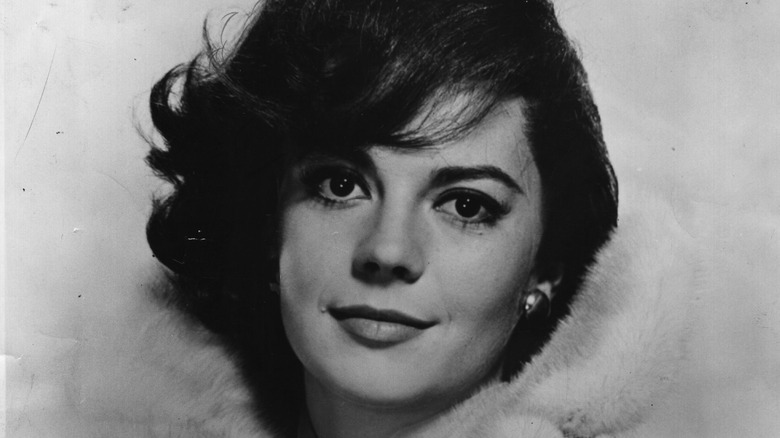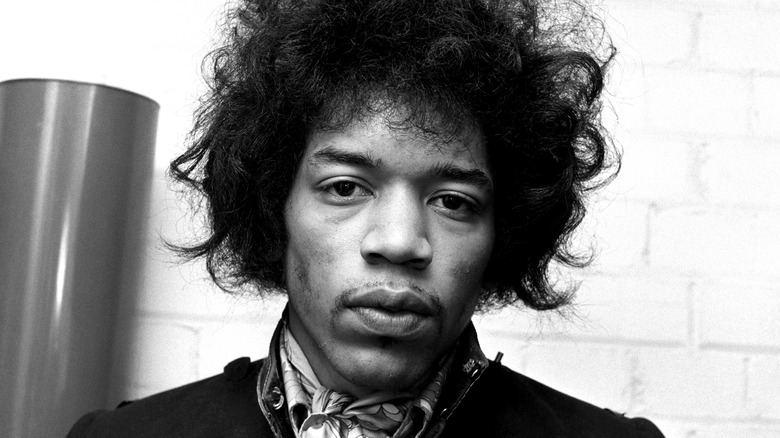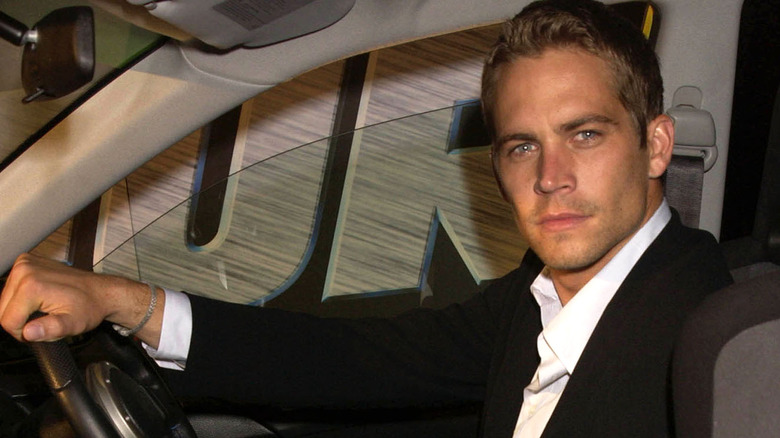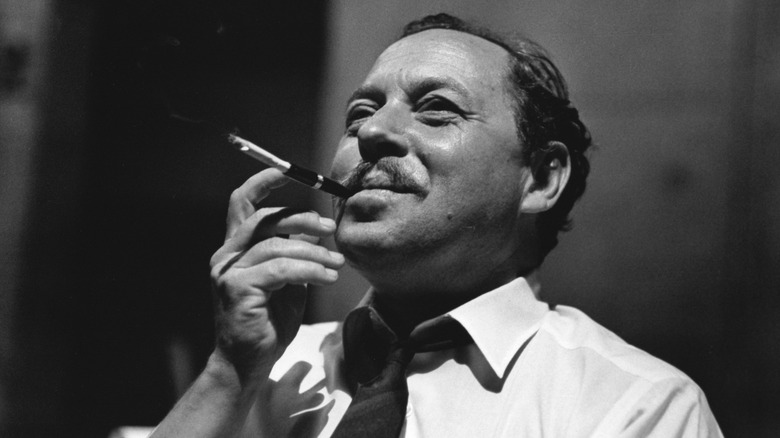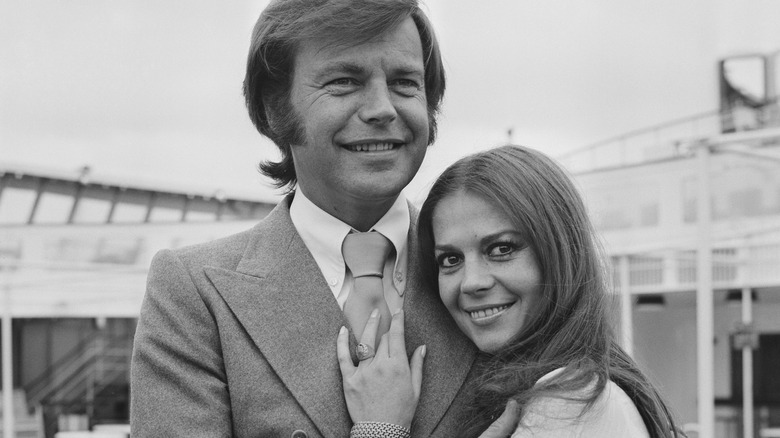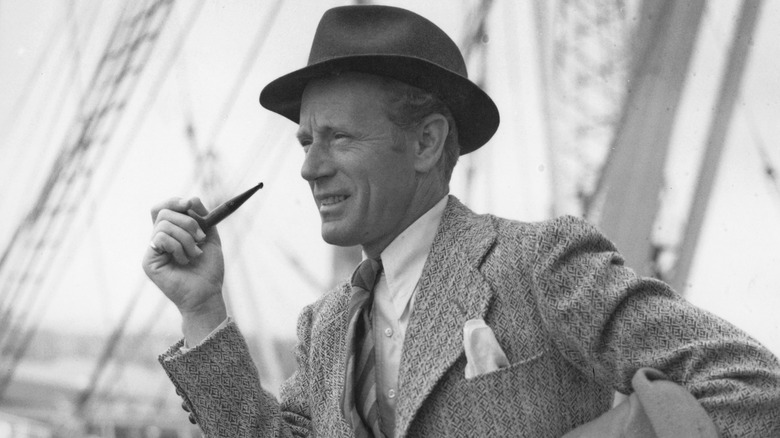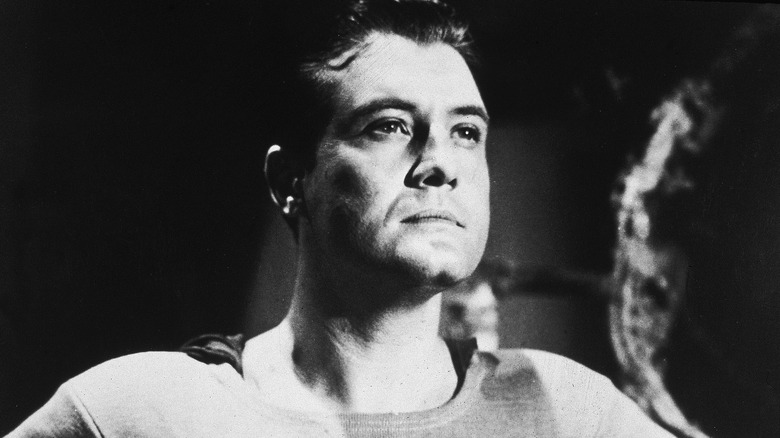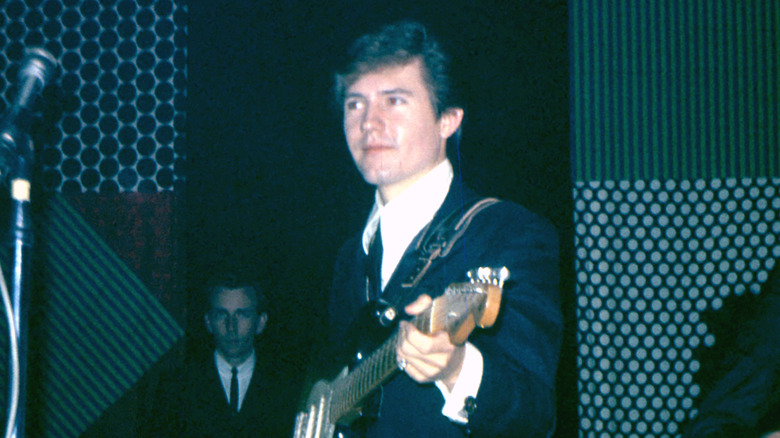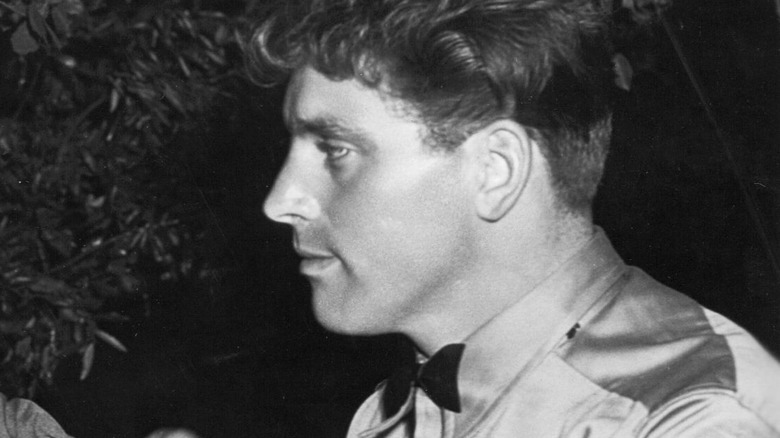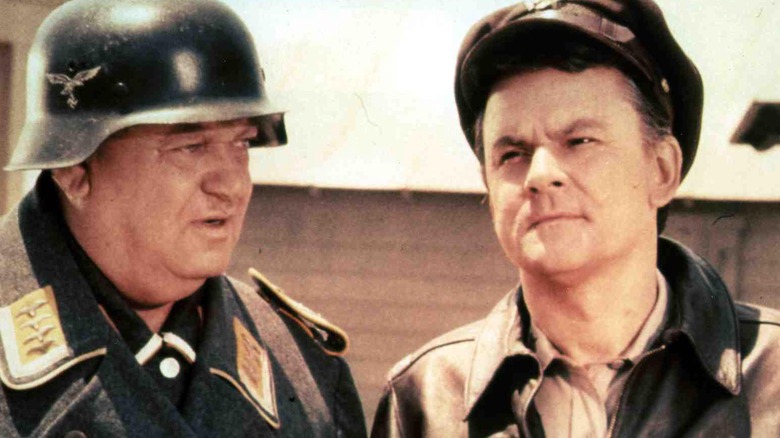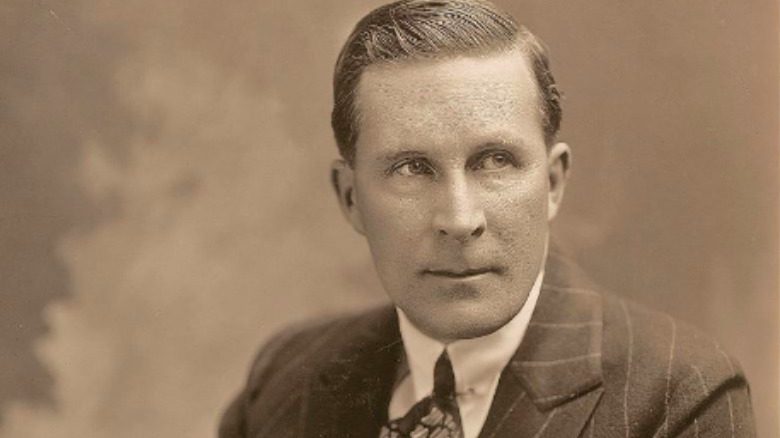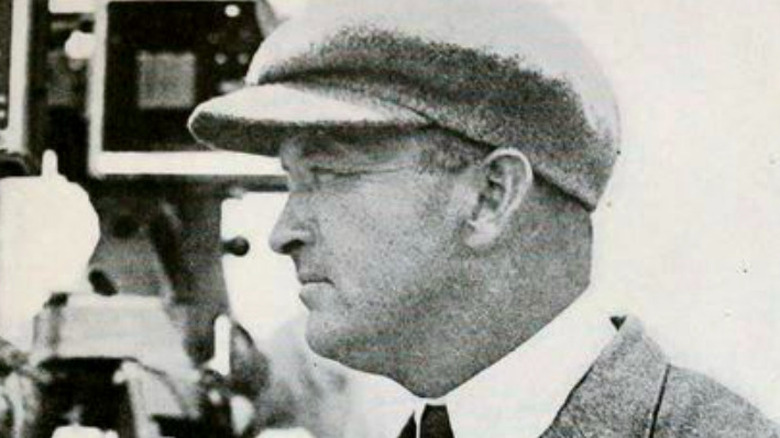Famous Deaths That Were Never Investigated
Conspiracy theories and celebrity deaths seemingly go hand in hand. When a beloved pop culture icon suddenly dies, fans immediately demand answers — especially when it seems that what appears to be a freak accident perhaps wasn't investigated thoroughly. "Conspiracy theories are definitely appealing because they are controversial and entertaining," Dr. Daniel Jolley, a senior lecturer in psychology at Staffordshire University, told Vice's i-D. "When a big event happens, our brains are drawn to make this connection; big event equals big cause!"
Sometimes, this collective public interest is enough to get authorities exploring every possible avenue — Jolley gave i-D the example of Princess Diana. While the royal tragically died in a car accident in Paris in 1997, the number of conspiracies that surrounded her untimely death resulted in the British Metropolitan Police disproving a whopping 175 distinct theories, dubbing the inquiry Operation Paget.
But what happens when a high-profile death isn't ever adequately examined? Remarkably, it's happened more times than one would imagine. Let's take a look at the famous deaths that were never investigated.
Brittany Murphy
The world was left in disbelief in 2009 when 32-year-old "Clueless" star Brittany Murphy was pronounced dead after going into full cardiac arrest in her Los Angeles home. Per TMZ, Murphy "had been complaining of shortness of breath and severe abdominal pain" for over a week prior to her death, while there was also a large amount of "strong prescription meds" next to her bed. As revealed by HuffPost, the cause of the actor's death was officially listed as an accident and attributed to "multiple drug intoxication, pneumonia and 'iron deficiency anemia.'"
However, what's even more bizarre is that Murphy's husband, Simon Monjack, was also found dead in May 2009 — a mere five months after his wife's demise and due to natural causes, too, per People. Of course, this didn't sit well with Murphy's family or her fans. According to The Hollywood Reporter, the actor's father, Angelo Bertolotti, filed a lawsuit against the Los Angeles Coroner's Office and the Los Angeles Police Department in 2012, demanding that toxicology tests be done to Murphy's hair for toxic mold. He finally secured a sample for independent testing, and, as he told HuffPost, his "suspicions were confirmed," with the results showing "10 heavy metals above the 'high' level set by the World Health Organization."
Oddly enough, the police never thought to pursue Bertolotti's findings further, and as Murphy's mother declared to Distractify in 2020, "We will never know for sure."
Jimi Hendrix
Since he was found dead in a London hotel room in September 1970, the death of Jimi Hendrix remains a mystery. According to ATI, the autopsy report officially said that the music icon "asphyxiated on his own vomit after taking too many sleeping pills," but conspiracy theorists have run amok since then.
It turns out Hendrix's new acquaintance, Monika Dannemann (who found him dead), initially claimed that she left the sleeping rockstar to buy cigarettes, and it's upon her return that she found Hendrix unconscious. Interestingly enough, per the Independent, Dannemann's story would change "more than a dozen times," often filled with inconsistencies. At the same time, while the ambulance team that came for Hendrix claimed that he was unresponsive, the Sussex police superintendent believed Hendrix was still alive by the time he reached the hospital. And to make matters even more confusing, Dr. John Bannister, the on-call surgeon who tended to the musician, said Hendrix was "covered in red wine," including his lungs and stomach, believing that the singer drowned (via Independent).
Hendrix's former roadie, James "Tappy" Wright, released a book in 2010 titled "Rock Roadie," alleging that Hendrix's manager murdered the star since he was the beneficiary of a $2 million life insurance policy (via Far Out), and yet, due to lack of evidence, further investigations were never done.
Paul Walker
"The Fast and the Furious" star Paul Walker tragically died in 2013 in "a single-car accident and explosion in Southern California," per TMZ. According to the outlet, the driver, Roger Rodas, allegedly lost control of the wheel, ultimately slamming the two-seater Porsche Carrera GT into a tree as it burst into flames, killing both men.
According to CNN, the crash was dubbed an accident due to Rodas driving at an "unsafe speed." Although Walker's daughter sued Porsche for "multiple design flaws" in the vehicle, the company accused the star himself, saying that the car had been "abused and altered." Online sleuths, however, had different theories. According to IBT, Walker was famously helping victims in the Philippines affected by Typhoon Haiyan with his charity, Reach Out Worldwide. As Before It's News wrote in a since-deleted article, forum GodlikeProductions originally posted a theory that the star "was murdered because he allegedly knew inside information about the relief efforts" (via IBT).
While such a theory should be taken with a grain of salt, another story floated by TMZ may carry more weight. According to the tab, the car shop co-owned by Walker and Rodas, Always Evolving, claimed that they "saw evidence of a fluid burst and subsequent fluid trail before the skid marks at the accident scene." If that's not enough, the speed at which the fire erupted was also a red flag, along with the fact that Rodas, a skilled Porsche driver, is unlikely to have lost control.
Tennessee Williams
Pulitzer Prize-winning playwright Tennessee Williams saw great success in his career, penning classics such as "A Streetcar Named Desire" and "Cat on a Hot Tin Roof." Tragically enough, according to Biography, while Williams saw success in the '40s, by the '60s, critics were panning his work, leading the writer to cope via alcohol and drugs. In February 1983, he was found dead in a New York hotel room.
According to The New York Times, the official cause of death was listed as asphyxia, with the chief medical examiner noting that Williams died by choking "on a plastic bottle cap" while trying to swallow barbiturates. The star's brother, Daken Williams, didn't buy that. Per UPI, Daken was convinced that Tennessee was murdered and demanded an investigation be started. "Someone very close to him smothered him with a pillow and when he stopped breathing put the cap down his throat to make it look like an accident," Daken declared, adding, "Or else it was the most bizarre death in the world."
According to the Daily News, Deputy Police Inspector Stephen Kelly claimed that he found "nothing suspicious" about the playwright's death.
If you or anyone you know is struggling with addiction issues, help is available. Visit the Substance Abuse and Mental Health Services Administration website or contact SAMHSA's National Helpline at 1-800-662-HELP (4357).
Natalie Wood
Natalie Wood's untimely death is one of Hollywood's most mysterious and has continued to stump fans today. Wood, a Hollywood icon and star of classics such as "Rebel Without a Cause" and "Splendor in the Grass," was the wife of fellow actor Robert Wagner. On Thanksgiving weekend in November 1981, Wood decided to spend the holiday aboard her yacht alongside Wagner, her "Brainstorm" co-star, Christopher Walken, and the yacht's captain. According to Biography, a disaster one night left her dead in the water, with the cause of death listed as "accidental drowning."
So, what happened? As Wagner revealed in his memoir, "Pieces of my Heart" (via CNN), he had become "jealous and argued with both Wood and Walken." Later on, when he noticed that the boat's dinghy was missing, he presumed his wife had retreated to shore. Interestingly enough, as Biography points out, the chief medical examiner who examined the star's body noticed "superficial" bruises on Wood, along with "scratch marks" on the dinghy itself.
Wood's death remains a mystery as of 2021. According to The New York Times, the case was reopened in 2011 after "more witnesses ... emerged," leading the accident to be viewed as suspicious. With Wagner as the top suspect, he simply refuses to talk to the police and hasn't since 1981. As Lana Wood told the newspaper, her sister would have never gotten on a dinghy alone at night. "Her fear of dark water was deeply ingrained."
Leslie Howard
British star Leslie Howard made his Hollywood debut in 1930. By 1939, he snagged the role of Ashley Wilkes in the Academy Award-winning "Gone with the Wind," per Britannica. Sadly, in 1943, Howard's life was cut short during World War II, when the Luftwaffe shot down the plane that was taking the actor from Lisbon to London. According to The Telegraph, the circumstances were mysterious. Why is that?
As it turns out, Howard teamed up with the British government during the war, making broadcasts to both his native country and America, reminding the public of the themes of "decency, tolerance, and freedom" while noting that these were the values that "Hitler was fighting against." Summarizing the Howard-based doc, "The Man Who Gave a Damn," The Telegraph notes that rumors immediately began circulating that Howard's plane was targeted because the bombers maybe have believed that Winston Churchill was on it, meanwhile the BBC claims that Howard was actually in Portugal to deliver more "anti-Nazi broadcasts."
This is where things get interesting. As José Rey-Ximena writes in his book, "Vuelo de Ibis" (via The Telegraph), Howard may have been a British secret agent that was on a mission to Spain and Portugal, having "secretly met with General Franco" to persuade Spain to stay out of the war. As such, he never made it back to England to convey the results of his meeting.
George Reeves
George Reeves shot to fame with the first-ever on-screen portrayal of Clark Kent in the 1950s TV series, "The Adventures of Superman." According to Biography, in 1957, the show was canceled, but his professional problems were soon brushed aside as his love life took center stage. As it turns out, Reeves was involved with Toni Mannix — the partner to MGM's vice president, Eddie Mannix. Leaving Toni for a new flame, Leonore Lemmon, Reeves' mistress was left fuming, and the actor ultimately filed a restraining order against her.
A mere two years after his show's cancelation, a 45-year-old Reeves was found dead in his bedroom from what was perceived as a self-inflicted gunshot wound (via Biography). The buzz surrounding his death was immediate, with some believing the star was murdered. As revealed by The Telegraph, some believe it was Toni who pulled the trigger, while others think it was Eddie, "because the actor had upset his wife" (per The Guardian, Eddie knew about his wife's extramarital activities).
Decades later, in 1999, Beverly Hills publicist Edward Lozzi finally came forward to declare that while Toni was nearing the end of her life, she had "confessed to her priest" with Lozzi in the room that it was Eddie's thugs who killed Reeves. According to Lozzi, since the Mannix thugs were all dead, he finally felt comfortable to speak out (via The Guardian).
If you or anyone you know is having suicidal thoughts, please call the National Suicide Prevention Lifeline at 1-800-273-TALK (8255).
Bobby Fuller
The Bobby Fuller Four are mainly known for covering The Crickets' "I Fought the Law," per UCR. The band, including singer and guitarist Bobby Fuller himself, moved to Los Angeles, California, from El Paso, Texas, hoping to chase their A-list dreams in 1964. Unfortunately, Fuller didn't enjoy long-lasting success, as a mere two years later, he was found dead in the driver's seat of his mother's car. As UCR notes, a gas can was found near the car, and Fuller's body was covered in gasoline. The cause of death was listed as "suicide by asphyxiation from the gas fumes."
Although Fuller's death was officially deemed a suicide, his body was covered in bruises, and the police that arrived at the scene didn't even dust the gas can for fingerprints. "Who would pour gas on himself in a hot car?" Fuller's brother, Randy, asked the El Paso Times in 1998. "I just think he got in a bad situation that night ... I'm 99.9 percent sure that it wasn't an accident or a suicide."
It's worthwhile noting that the Los Angeles police was going through a transitional period around the time of Fuller's death. As "I Fought The Law: The Life and Strange Death of Bobby Fuller" reveals (via Los Angeles Times), two days before the singer's body was found, L.A. Police Chief William H. Parker suddenly died of a heart attack, resulting in Fuller's death not being "considered a top priority."
If you or anyone you know is having suicidal thoughts, please call the National Suicide Prevention Lifeline at 1-800-273-TALK (8255).
Albert Dekker
"Dr. Cyclops" star Albert Dekker had quite an enduring career in Hollywood. According to TCM, the actor starred in over a whopping 70 feature films over four decades — an impressive feat for any thespian. A big star of the '40s and '50s, by the time the '60s came around, Dekker had migrated to roles on the small screen, yet he was never without work. This is why his death in 1968 remains bizarre, and the details that came out only shrouded it in even more mystery.
According to The New York Times, Dekker was found dead in May 1968, in his bathroom, with a rope tied around his neck, legs, one arm, and the showerhead. As the deputy coroner told the outlet, there wasn't any indication that the actor "planned to take his own life," and as such, his death was "tentatively ... listed as an accidental death."
Digging a bit deeper into Dekker's death, however, leads to more menacing results. As revealed by "Tales of Hollywood the Bizarre," the coroner's report stated that the noose wasn't tight enough to have strangled him in a suicide attempt, and the man was blindfolded. And that's not all: slurs written in lipstick defiled his body, and his hands were handcuffed. Of course, with such information, the coroner actually disagreed with the police's idea of Dekker's death being self-inflicted, and yet, no investigation was ever started. As such, Dekker's death remains listed as accidental to this day.
Bob Crane
Bob Crane's name will forever be synonymous with "Hogan's Heroes," the World War II-based comedy that made him a household staple on small screens throughout the '60s and '70s. According to TCM, Crane adored his sudden fame, but it also sent him down an epicurean spiral, with the actor suddenly cultivating "a passion for sexual hedonism."
It's that same lust for the seedier side of fame that ultimately led to Crane's sudden, surprising death in 1978. As revealed by AZCentral, the actor was found in his apartment, with "his skull bashed in with a blunt object and an electrical cord around his neck." Crane was, without a doubt, murdered, so why has the case remained cold? According to Crane's son, Robert, his dressing room was "porn central," with the actor storing X-rated negatives, polaroids, and films, per Entertainment Weekly. Helping Crane with his hobby was John Henry Carpenter, a Sony salesman — who became "the only suspect in the case" (via AZCentral).
Carpenter was free for years until finally facing trial in 1994. According to Entertainment Weekly, due to lack of forensic evidence, he was acquitted and died four years later. "It just means a lot of bad things to me," Carpenter told the Phoenix New Times in 1993. "Not only did I lose one of my best friends here, those idiots accused me of doing it."
William Desmond Taylor
Well-known in the early years of Hollywood, director William Desmond Taylor has a whopping 60 credits to his name in only an eight-year timespan. Who knows how many more marquees the filmmaker would have lit up if it wasn't for his untimely murder in 1922. Per History, police came to Taylor's home after responding to a peculiar call regarding a "natural death." What they saw was far from natural: the director, on the ground, "with a bullet in his back" — and no sign of a robbery or break-in (via The Guardian).
Multiple suspects came to mind. According to History, Taylor was romantically involved with Mabel Normand, a comedian, while Mary Miles Minter, a teen star in his flicks, was also infatuated with the filmmaker, with her mother, Charlotte Shelby, disapproving of her daughter's crush. Perhaps what linked Minter the most, however, was a "love note" that police found written in the young actor's handwriting — and the chilling fact that Minter once tried killing herself with the same type of gun used to shoot Taylor.
As revealed by History, nothing ever came of any of this information. However, something else came to light in 1986. According to the Los Angeles Times, when documentary filmmaker Sidney Kirkpatrick was researching director King Vidor, he uncovered a fact that Vidor came by himself: Taylor was secretly gay, and it was Paramount Studios who "[fed] false information to the press," while the murderer allegedly "paid off officials."
Thomas H. Ince
Director Thomas H. Ince's death remains a mystery to this day — and it allegedly could have resulted in the murder of a silent movie legend, instead. According to The Vintage News, Ince was widely regarded as "one of the most influential independent producers of his time," having been involved in over 800 films and earning the nickname the "Father of Westerns."
Of course, considering his prominence on the A-list, for his 42nd birthday in 1924, Ince was invited aboard the yacht of publisher William Randolph Hearst. Notable guests aboard the ship were Hearst's mistress at the time, Marion Davies, who also happened to be "The Gold Rush" co-star of Charlie Chaplin (also in attendance). Per The Vintage News, after dinner, Ince allegedly left the yacht due to "terrible stomach cramps" (the director was plagued with ulcers). It's believed that the star died at home from heart failure three days later.
But perhaps Ince never left Hearst's yacht. As noted by the New England Historical Society, rumors began circulating that it was the newspaper publisher who shot the producer himself, as he was under the impression that Davies was having an affair with her co-star. As such, the gunshot was intended for Chaplin yet accidentally struck Ince. To make things significantly more suspicious, Ince's body was immediately cremated before any sort of autopsy could have been performed (via The Guardian). A cover-up, perhaps, but one that nobody will ever know.
